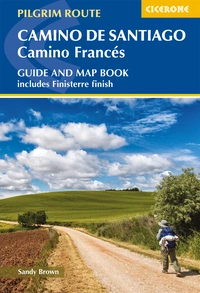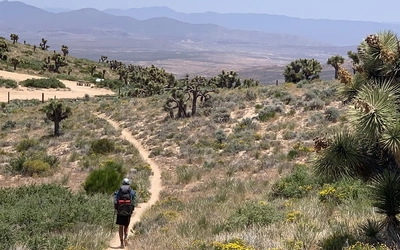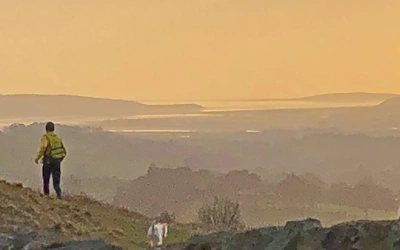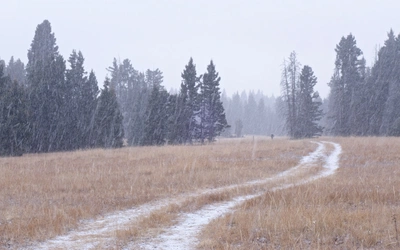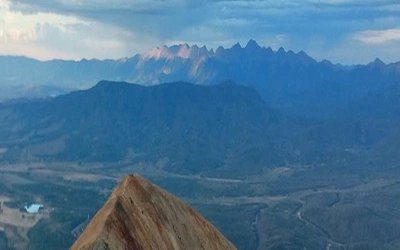Thru-hiking the Continental Divide Trail: Prep and planning
Owen Eigenbrot is preparing to thru-hike from Canada to Mexico across the US on the yet-to-be-finished Continental Divide Trail. Planning for a 3100-mile trek is a daunting task, but experience and a heavy dose of realistic optimism give him the confidence that not having all the answers can be a good thing.

As summer warms up, the mountain snows start to melt, the wildflowers bloom and hikers everywhere prepare for the latest round of sunburn. A glorious season of outdoor adventure awaits, yet here I am worrying about the snow next winter as I pore over maps, guidebooks, and blogs. That is my burden of choice as I plan for my thru-hike of the Continental Divide Trail (CDT) and I have been carrying it for months. I know from my previous experience on the Pacific Crest Trail (PCT) in 2015 that none of this worrying matters one bit, yet still my head swims with conflicting advice and useless trail statistics. The trail is long and so is my to-do list, but when my feet finally start crunching the dirt, my mind will clear because I’ll know exactly what to do.
The Continental Divide Trail is the least visited of the three Triple Crown trails in the US. While the Appalachian Trail (AT) and Pacific Crest Trail receive thousands of people attempting thru-hikes each year, the Continental Divide Trail hosts around 200. Heck, the trail isn’t even finished yet. The CDT is more of a choose-your-own-adventure type of experience, with no accepted ‘official’ route and countless alternates to be chosen by each individual on a whim or as conditions allow.
The phrase ‘hike your own hike’ has never been more relevant, and no two hikers will walk the same CDT.
In general terms, the CDT traverses the Rocky Mountains north to south along the continental divide of the US through Montana, Idaho, Wyoming, Colorado and New Mexico. Depending on route choice, total mileage can vary between 2500 and 3100 miles. If that 600-mile discrepancy seems like a lot to you, rest assured, I’m in the same boat. I am filled with questions that I have no chance of answering until I get out there to see for myself.
I’ll be hiking the trail southbound, or ‘sobo’ in trail parlance, beginning in late June at the US–Canada border just outside Glacier National Park. With determination and luck, I’ll hit the US–Mexico border at the Crazy Cook monument by mid-November. Whether I make it 30 miles or 3000, a summer on the continental divide will bring me all the adventure I can ask for.

Logistics
As one might imagine, planning each detail of such a long hike would be impossible. Fortunately, the CDT requires no such thing. Besides a train ticket to East Glacier, MT, the nearest town to the trailhead, nothing else has been booked. With everything needed to survive in my backpack, there is no need to choose daily camping places. In the wilderness, I will walk until dark, then sleep until morning. Day after day. Permits, where they are needed, will be obtained along the way.
Out of perhaps 28 towns (a term used generously in many cases) that I plan on visiting along the trail, I will be shipping boxes of food to 10 of them. While the other 18 have grocery stores, these 10 have been chosen for their lack of such or an appetising alternative. Additionally, observing a plant-based diet presents some nutritional challenges that will be new to me. My boxes include vegan staples like chia and hemp seeds, along with a sickening amount of peanut butter and dehydrated refried beans to balance out an assortment of sugary junk food snacks. Fresh fruit and veg will be on the menu in every town, as will the greasiest food available to give my body the nutrients and calories it needs to recover before the next section. Eating 3000–5000 calories per day can be a tough job, but I know I’m up to the task.
Navigation
Although the Continental Divide Trail is only about 70% complete and lacks an official route like the PCT and AT, it is well mapped with three or four excellent sources that include the entire length and most of the alternatives.
As much of the route has no established trail at all, I am excited to discover if my prowess with map and compass is as good as I think it is.
I have printed about 100 sheets of paper maps that have been divided up to be included in my food resupply boxes along the way.
Using phone apps as a primary source of ‘staying found’ will be new to me. With offline GPS functionality, a dedicated CDT app will tell me where I am and provide information on waypoints including trail junctions, water sources and campsites. As apprehensive as I am to put so much trust in a piece of technology that is reliant on electricity and staying dry to function, the convenience and accuracy of such a powerful tool have no equal. My paper maps and compass will be there if the inevitable should happen.
Concerns
There are plenty of causes for concern on a 3000-mile journey. Most of them are typical to any wilderness experience such as injury, wildlife and weather, but the longest trails add a very powerful layer: time. Hiking the entire CDT in one season requires focus on the task at hand and a bit of luck. My start date is determined by the amount of spring snow lingering in northern Montana, and I will be pushing hard to make it through the San Juan Mountains in southern Colorado, roughly 2000 miles later, before winter storms bring new snow as early as mid-September. An exceptionally generous snow year here in the American West has already pushed back my start date by a couple of weeks to the last week in June, and there’s no telling when winter will close the Colorado mountains. Let’s just say that I’m hoping for a warm, dry October.
Fires are another consistently disruptive force in the region that can derail the best laid plans. There isn’t much I can do to prepare for the randomness of an errant spark or lightning strike but remaining flexible and up to date with conditions should keep wildfires as merely a potential inconvenience, not a threat to my safety.
Gear
Gear choice is a rabbit hole that deserves and has entire books dedicated to the subject. Here, I will say that lighter is better. When hiking all day, every day, the most important consideration for personal comfort is pack weight. If I’m not hiking, I’ll probably be sleeping, so that camp chair and book will stay at home. Of course, safety in less than ideal conditions always needs consideration, but ‘comfort’ is sacrificed willingly in the name of shaving off even just a few ounces. Sure, a tent offers bug protection, privacy and isn’t missing two walls, but my tarp weighs less than a pound and uses my trekking poles instead of a dedicated set that serves only one purpose. My sleeping quilt has a gaping hole in the back, but it doesn’t have the added weight of a zipper. I’ll carry a garbage bag with the bottom cut out in lieu of rain pants, and I won’t carry a stove to save on the weight of a metal pot and fuel. Who needs hot tea in the morning when the views are so incredible? And I can say with confidence that instant mashed potatoes are just as good cold as they are hot.
Extra clothes? Forget it. I’m going to stink, but my shoulders will be feeling fine. And you better believe that I’m chopping the handle off my toothbrush!

Preparing the body and mind
There are few activities that can prepare a person for a thru-hike, physically or mentally, better than a thru-hike. Even though this is a completely different trail in a largely unfamiliar environment, I feel fortunate to have the PCT under my hip belt. I know that the CDT will be hard. I know that I will be tired. I know that my feet will suffer a brutal break-in period featuring a terrifying number of blisters. But I also know that the rewards will be great, the freedom unmatched and that I will be amazed by my body’s resilience. I don’t have the time to work up to the 25 miles per day average that I hope to achieve on the trail, but I’m doing my best with 16-mile days several times a week. While pre-hike training will take the edge off the early aches and pains, it won’t make or break my CDT experience. The major tests will appear in forms that I can’t yet fathom, when I least expect them. Being open to these challenges is at the essence of what it means to thru-hike.
Motivation
I am careful to remind myself that hiking the CDT will be hard. I expect it to be more challenging than anything I’ve ever attempted before and would be foolish to ask for anything less. So why am I doing it? Honestly, I haven’t been able to come up with a concise answer to that question, but maybe that’s the point. The scale of this endeavor feels grand beyond my ability to comprehend, so perhaps my motivation to attempt it is outside my comprehension. What I can understand is that the draw of the trail is powerful. The curiosity to see what’s out there and to test my limits will not be denied. My motivation and expectations defy clear definition, which leaves me open to receiving whatever may come. I’ll find what I find, and I am confident that it will be enough.
What you’ve just read is me being as brief as I can be in describing my prep for the Continental Divide Trail. I could write a lot more and will end up doing just that as I go. If you would like to follow the journey, head over to my blog at hikefordays.com, which I plan to update with daily posts once I get underway. It also includes some shorter Cicerone-inspired trip write-ups from the Alps if following along for 5 months seems like a daunting task. Additionally, my partner and I are using this hike to raise funds for the charity Big City Mountaineers, who take under-resourced young people on mentorship-based wilderness backpacking excursions. We are passionate about this cause and would appreciate any support tremendously. For more information on BCM, head to our fundraising page: give.classy.org/cdt




